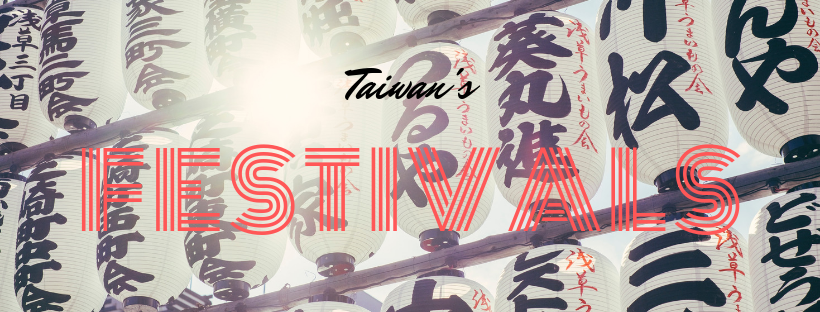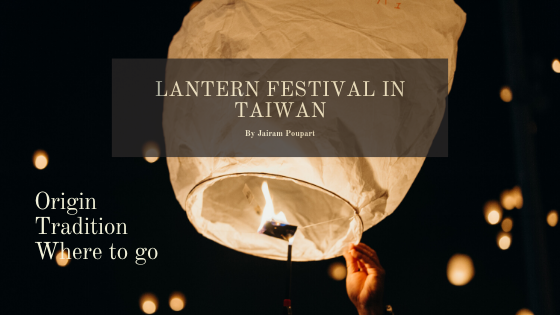The Lantern Festival marks the end of the Chinese New Year celebrations and is held on the 15th day of the first month of the Chinese Lunar Calender. Also named Yuan Xiao, this celebration is held on the first full moon of the New Year and symbolizes the coming of Spring.
It is an important celebration all around Asia. Family come together to gaze at the moon, solve riddles, drink wine, write poetry, assist at lion dances and dragon dances and of course; light lanterns. It is a time of socializing, freedom and religious belief.
This year, in 2020, the Lantern Festival will be held on the 8th of February in the Gregorian Calender.
Origin
It is said that the festival began more than 2000 years ago in the Western Han dynasty (206 BCE - CE 25).
Emperor Wu chose this day to worship Taiyi, one of the universe’s sovereign in Taoism.
To celebrate the return of peace, Emperor Wen made the 15th a national holiday where every household would light candles and lanterns. It was an event where people would socialise and have fun.
Emperor Ming was an advocate of Buddhism. When he heard that some monks were lighting lanterns on the 15th day to show respect to Buddha, he ordered that all households, temples and royal palaces should light lanterns on that day.
The rite would spread throughout China and other parts of Asia and become the Lantern Festival of today. (source)
Although not anymore, some called this festival the true Chinese Valentine’s Day. In Ancient China, women weren’t allowed to leave the household. But on that special night, they could venture out and many young people were chaperoned in the streets in hopes of finding love.
Legend of the Lantern Festival
The Jade Emperor and the Fairy Crane
A long time ago, a beautiful crane flew down from heaven and got lost. As humans were often attacked by fierce beasts, they would hunt them down to protect their own. Unfortunately, the holy bird got killed by a hunter who mistook it for a beast.
When the Jade Emperor learned that his favorite crane had been killed by the humans, he was so enraged that he planned on incinerating all humans by engulfing them in flames on the 15th day. However, not all celestial beings agreed to it and the humans were warned by the Jade Emperor’s daughter.
Not knowing what to do, everyone fell into despair except an old man who had a plan. The wise man advised everyone to create and light red lanterns, launch fireworks and explode firecrackers in order to create the illusion that the town was already ablaze.
The plan worked perfectly and the Jade Emperor didn’t attack, fooled by the illusion. Happy they survived, the people decided to keep the tradition every year. (source)
Dongfang Shuo and Yuan-Xiao, the maid
During the time of the Han dynasty, Dongfang Shuo was a favorite advisor to the Emperor. One day, he heard a girl crying and ready to jump into a well to commit suicide. He stopped her and asked her why.
She told him her name was Yuanxiao and that ever since she started working as a maid, she hasn’t had the time to visit her family. Homesick and unable to show her filial piety, she would rather die. Shuo promised her to find a way to reunite her with her family.
Shuo left the palace and set up a fortune-telling stall in the street. Many people visited him due to his reputation. They would all get the same prediction: The God of Fire would send a fairy in red riding a black horse to burn down the city. The people should ask for her mercy…
Disguised as the fairy, Yuanxiao marched in the town with a copy of a decree from the God of Fire and told the people to bring it to the emperor. The emperor read the decree stating that the city would burn down on the 15th and asked Shuo for advice.
The advisor told the emperor that the God of Fire love tangyan (sweet dumplings) so Yuangxiao and every household should prepare it as an offering. Also, every house should prepare a red lantern and explode firecrackers.
To distract the God of Fire, everyone should carry their lantern on the streets to watch the lantern decorations and fireworks. On the fateful day, the plan worked perfectly and Yanxiao was able to sneak out of the palace while everyone were watching the lanterns to spend time with her family.
Because it all went so well, the emperor decreed that it should be a tradition. Since Yuanxiao cooked the best tangyan, people also called the day Yuan-Xiao Festival. (source)
How is it celebrated?
The most common celebration customs are the lighting of lanterns, solving lantern riddles, lion dances, eating tangyan, fireworks, firecrackers and a few more activities.
Enjoying the Lanterns
Used originally as a light source, they have been associated with the worship of Buddhism. Of various shapes and sizes, they often depict Chinese symbols and images such as animals, fruits, people and buildings.
They symbolize illuminating the future and giving birth. (source)
There are three main types of lanterns:
Hanging Lanterns:
Photo by Frédérique Gélinas on Unsplash
Very common, you can see these lanterns in shops, homes, street lights and public spaces. Used for decoration and celebration, they are thought to scare away the Nian monster and bring luck.
Flying Lanterns:
Photo by Leon Contreras on Unsplash
Mostly seen during special occasions like Mid-Autumn Festival, these airborne lanterns are propelled by a flame inside. They are often released in large groups to create an amazing effect.
Floating Lanterns:
These lanterns are used near lakes, ponds and rivers during special events like the Dragon Boat Festival. Like the Flying Lanterns, they are released in groups to create a bigger spectacle. (source)
Solving Lantern riddles
One of the most popular activity during Lantern Festival, this tradition goes back to the Song Dynasty (960-1279). Lantern owners attach riddles to colorful lanterns in social gatherings.
People gather around with kids and family members to try to guess the riddles. If a person thinks they have the answer, they pull off the riddle from the lantern and go and see the lantern owner if their answer is right. If they are right, they win a small gift as a prize. (source)
Lion Dances
Photo by Fikri Rasyid on Unsplash
This folk tradition dates back to the Three Kindoms Period (220-280). Two highly-trained performers are dressed in a lion suit and dance under the beat of a drum, gong and cymbals. They often perform difficult tasks such as walking on stilts, jumping and rolling.
Eating Tongyan (also called Yuanxiao)
Tongyan are rice dumplings balls made with glutinous rice flour and stuffed with different ingredients such as sugar, walnuts, sesame seeds, been paste, rose petals, jujube paste, peanut butter or many ingredients. They are served boiled, steamed or fried and served with tianjiu (fermented rice soup).
These sweets are round like the moon to symbolize wholeness and spending time together. It is believed that eating tangyan or yuanxiao may bring luck, happiness and harmony to the family in the next years. (source)
Where can I see the Lantern Festival?
Here is a map of the most popular places to celebrate the festival:
Pingxi Sky Lantern Festival
Most famous event in Taiwan, it has gained massive popularity when National Geographic Travel named it one of the best Winter trips. People gather to write their wishes on Sky Lanterns to release them to the gods. During the night of the Festival, thousand of lights illuminate the skies, making it an unforgettable event.
For more information, check out the main event website here. For a complete guide of the event, click here.
Taipei Lantern Festival
This year’s event will be taking place in two venues. (source)
The venue in western Taipei will be Ximending in Wanhua District and is titled ‘‘Together We Glow’’.
The estern venue will be in Nanxing Park in the Nanxing District with the theme ‘‘Wild Taiwan Style’’.
Here is the official website with the map of 2020’s event and the schedule.
Other popular places to see the Festival
Kaohsiung Lantern Festival
Taitung Bombing of Master Handan
Tainan Yue Jin Lantern Festival
Central Taiwan Lantern Festival
Penghu Lantern Festival
Hualien Lantern Festival
Conclusion
If you ever come to Taiwan, this is an event you can’t miss. Magical and impressive, it is definitely one of my favorite events. Although the lanterns can have negative impacts for the environment, there are cleanup crews and cleaning initiatives and we will most likely see biodegradable ones that will solve that problem in the near future.
Happy Lantern Festival!
May all your wishes come true








